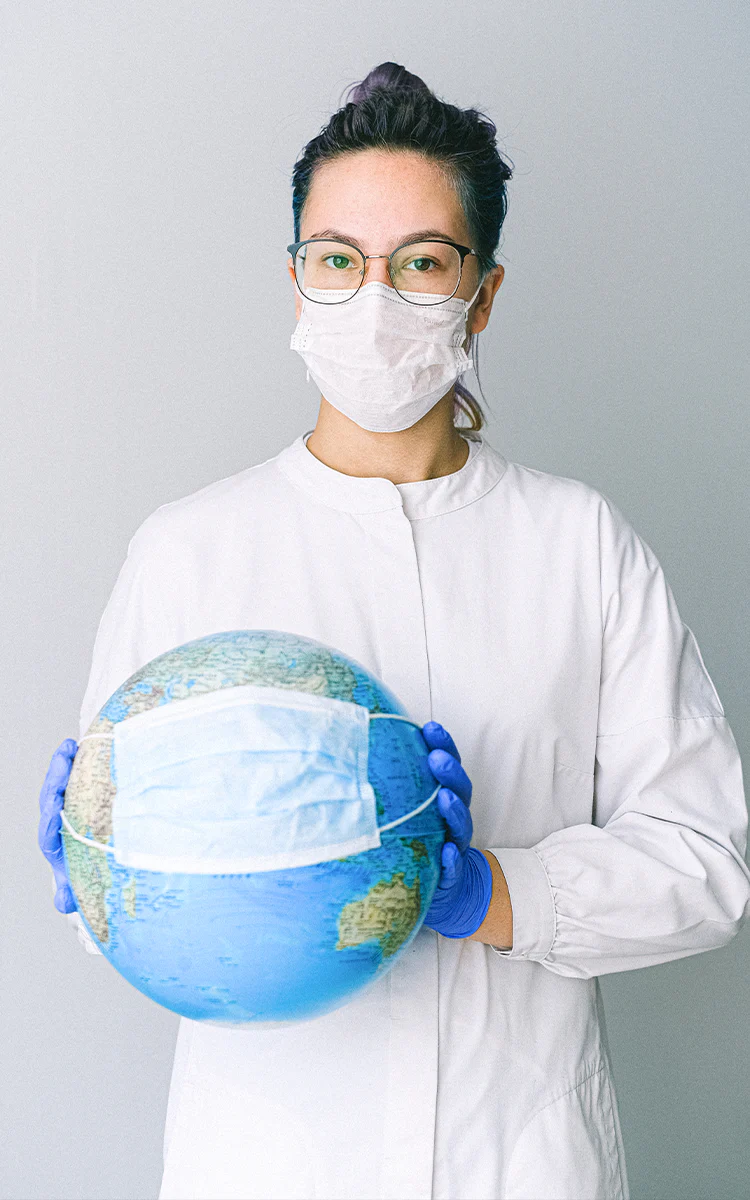
BE THE FIRST TO KNOW
About our newest arrivals, special offers plus 10% off on your first order.
The personal protective equipment (PPE) that protects the wearer from infectious diseases and other hazardous materials in the healthcare industry is known as the medical gown. Protective gowns play a crucial role in patient care as well as in medical professional safety.
What is the Difference Between Isolation Gowns and Surgical Gowns?
For many years now, isolation gowns have been used in the medical field. With the emergence of Ebola and Covid-19, isolation gown manufacturers saw an increasing demand for these gowns. However, don’t confuse them with medical surgical gowns. Although they look similar, they aren’t identical. If you get hold of the wrong one, it would expose you to infections. So, make sure you know the difference between the two if you are thinking about purchasing any of these gowns.
Isolation gowns
The major difference between isolation gowns and surgical gowns is the vital zones of testing and protection. The back of a surgical gown won’t really act as a protective barrier. The isolation gowns not only offer protection for the entire back but they hold a barrier performance of at least level 1.
Mostly in medical scenarios where the risk of infectious transmission or contamination is medium to high and when there is a requirement for greater crucial zones of protection, isolation gowns can be found. These gowns are regulated by the FDA.
Every area of an isolation gown is considered a critical zone of protection, other than the hems, cuffs, and bindings. These gowns must meet the highest possible standards for liquid barrier protection at their given level. The seams of a ppe isolation gown should also have the same liquid barrier protection. The fabric shouldn’t cover more of the body than is actually needed for a specific procedure.
Surgical Gowns
A surgical gown is FDA regulated and is classified as a Class II medical device. It means they are needed to have a 510(k) premarket notification. These medical products are crafted for medical people to wear during different types of surgical procedures and surgery. These gowns mainly focus on protecting the patients and the wearer from the transmission of body fluids, harmful micro-organisms, and dangerous particulate matter.
All surgical gowns are crafted with crucial zones. These are the areas where direct contact with infectious substances, blood, and bodily fluids has the highest chance of occurring. The crucial zones range from the top of the shoulders down to your knees and from the wrist to just above the elbow with surgical gowns.
The surgical gowns are suggested for use at any risk level, from 1 to 4. These are specifically labeled with a tag as surgical gowns.
Are you a medical professional in immediate need of wholesale disposable isolation gowns for your organization? Hurry and get in touch with a reliable medical device manufacturer now!
The purpose of an isolation gown is to help protect your staff from infectious droplets and disease, solids and fluid penetration and to stop the transfer of micro-organisms to the vulnerable residents. The disposable isolation gowns bulk are one part of an overall infection control strategy. A few of the many terms here that have been referred to the medical gowns also include procedural gowns, operating room gowns.
There are mainly 2 main categories intended for the medical or isolation gowns for healthcare purposes.
Intended to be worn by healthcare personnel during surgical procedures to protect both themselves and the patients from the transfer of the body fluids, particulate matter and microorganisms is a surgical gown.
Non surgical isolation gowns are one of the best medical devices that are meant to protect the wearer from the transfer of body fluids and microorganisms in minimal or low risk patient isolation situations. They are not worn during invasive procedures, surgical procedures or when there is a medium to high risk of contamination.
This one is a 3 layered tri-laminated material. The acronym here stands for sunbound, meltblown, spunbound. Spunbound polypropylene makes a good inner / outer layer as it durable, strong yet breathable fabric. Spunbounds have antistatic properties and are flame retardant. They can be used for increased gamma ray and ultraviolet protection. Meltblown polypropylene on the other hand has weak properties due to the micro fibers. But these fibers also give more surface area. Spunbounds and Meltblown together create a product which is breathable, comfortable, resistant to tears and punctures and lightweight. Based on the above options, the isolation gowns are made. A suggestion would be to go for SMS material one.
This the most basic type of material. PP here stands for polypropylene which is a thermoplastic. It is strong and can usually bear high temperatures. The polypropylene is then coated with PE, Polyethelene. It is a thermoplastic very similar to that of polypropylene. The PE coating comes with an extra barrier for chemical resistance.
The preferred PPE clothing is generally isolation gowns. If you anticipate arm contamination then select isolation gowns. The gowns should fit you comfortably over the body, covering your torso and should have long sleeves fitting you snugly around the wrists. If you are a medical professional reading this blog wondering how to become a medical equipment distributor then wait no more but get in touch with a renowned medical device manufacturer now!
Depending on the particular risk factors involved, select sterile or clean gowns. For isolation purposes, make sure you use a clean gown while sterile gowns are only required when performing invasive procedures like inserting a central line. In such a case, a sterile gown would protect both the health care worker and the patient.
Copyright © 2025 8Health. All Rights Reserved.